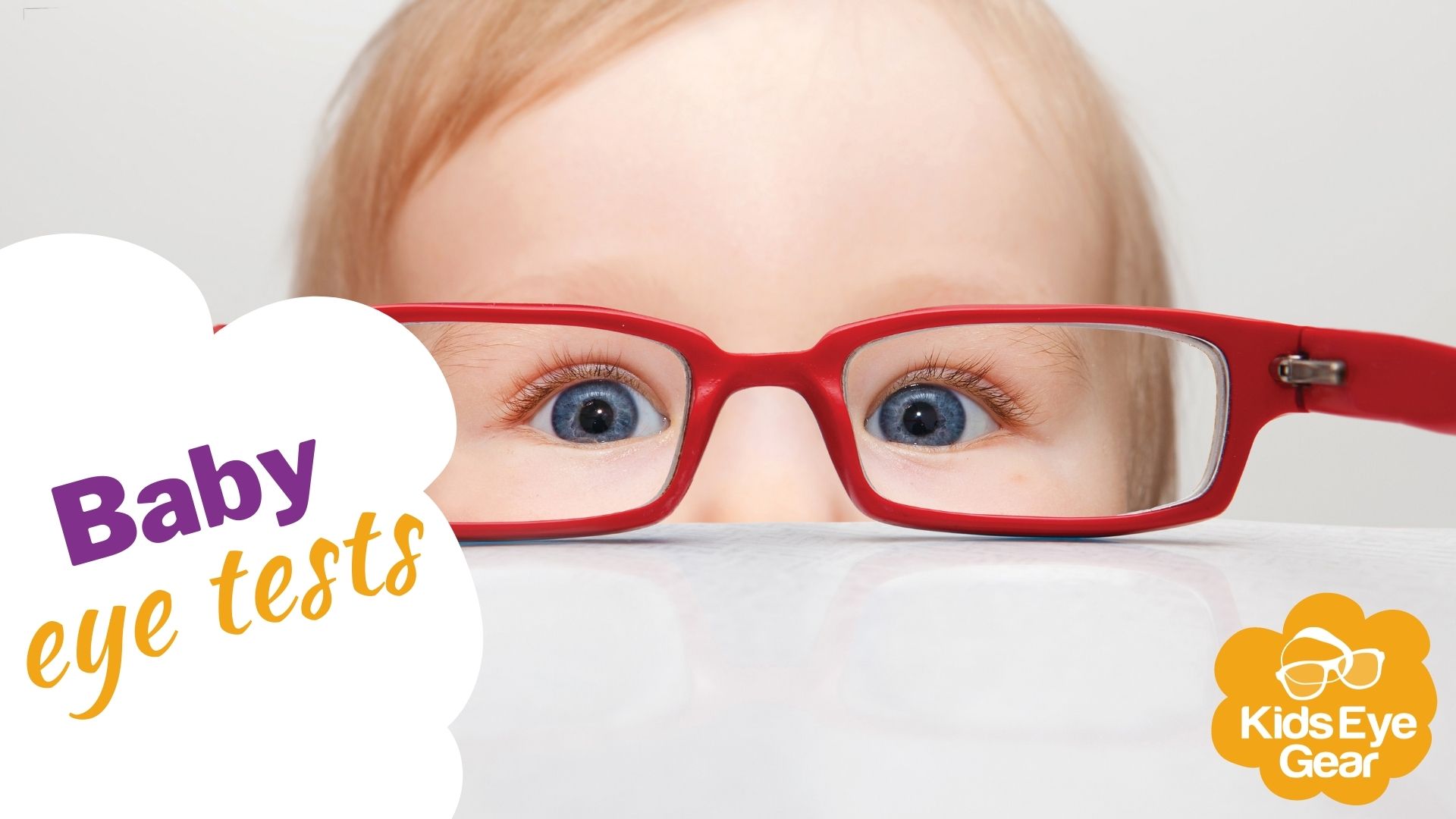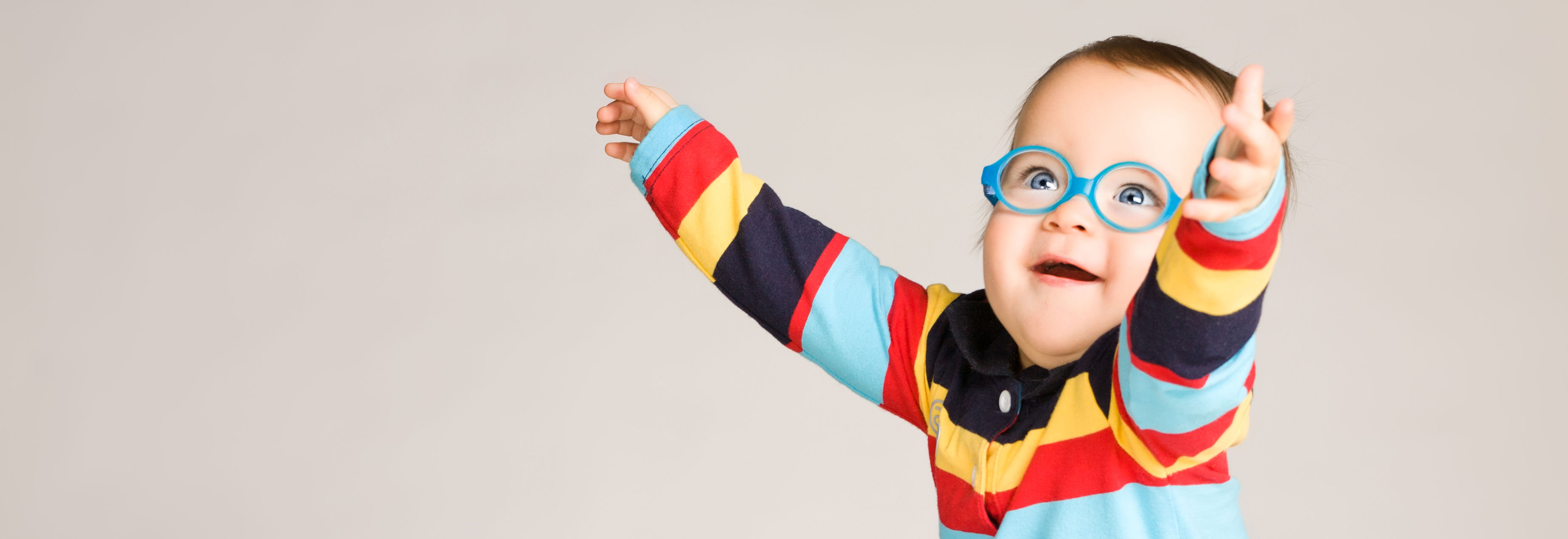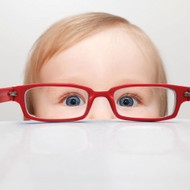How do Babies Get Their Vision Tested?
10th Jan 2020

When you think about an eye test, you most likely imagine sitting at the optometrist with one eye covered, reading the letters on the chart on the wall across from you. This seems normal for adults but what about when it comes to children, especially babies, who may not be able to read or even tell us what they can see.
At our last ophthalmology appointment the very worried parents sitting next to me had flown with their five month old baby to the appointment. As most of you reading this will know, waiting for an ophthalmology appointment can be long and boring so we had a bit of a chat and of course I overheard parts of their conversation. One thing I found interesting was that they were saying they would need to teach their baby son to recognise letters pretty early on in order for him to perform vision tests in the future. This took me back and made me think about the changing vision tests Dane has had over the years.
While we as grownups have to recite letters from a screen, and toddlers will use a series of shapes, it’s obviously much trickier for a baby. They can’t read or speak more than a babble. They can’t tell you that their eyes hurt or that they may be struggling to see colour. A baby vison test is done quite differently than for you or me.
When are baby’s eyes tested?
In Australia, a baby born in hospital will have their eyes tested within the first few hours of their life. The paediatrician will look for congenital eye issues like cataracts and eye disease. If you have a family history of eye problems a more in depth test may take place. This will usually be repeated daily until you and baby leave the hospital. If something is wrong, you will be referred on to a specialist. If everything appears fine, most of us will leave the hospital and not think about eye tests for a long time – although remember that Optometry Australia recommends children should have a vision test before they start school.
A baby’s eyes should then be checked at each well baby visit or GP check-up, which typically take place until they start school. GP’s are trained to do basic vision screening – and thank goodness for that as it was our GP that picked up Dane’s congenital cataract! They will look for things like pupil size, eyeball and eye lid shape, signs of eye infection or disease. They will also perform a test to check for eyeball tracking and light sensitivity. A baby’s eyes should move together while tracking an object and they should blink when light is shown in their eyes. These tests are usually super quick and won’t bother baby. Serious vision issues in babies are quite rare but if something untoward is picked up, the baby will be referred to a paediatric ophthalmologist. Obviously if you suspect there might be a problem at any stage, head to your GP to get checked!

So how does a baby take a vision test?
Since a baby can’t read the letters on a chart or tell us which lens looks better, eye doctors use other methods to test a baby’s vision.
Red reflex test
Doctors can use an ophthalmoscope to magnify the eye and use a light to examine it clearly. When light is shone into the baby’s eye, a red reflection should be seen as it’s reflected back. This was missing in Dane’s eye due to his cataract – instead it was a white reflection.
Pupil reflex test
This is generally done with the lights heavily dimmed so that the baby’s pupils (the black centre of the eye) dilate, or get bigger. The baby’s eye should automatically shrink when light is shone in their eye and if it doesn’t, it can mean there is a problem.
Attention to visual objects/Range of movement test
This is when the doctor or optometrist tries to get the baby, or young child’s, attention, getting them to follow an object to see if their eyes track together.
Refraction test
This type of test would be carried out by an optometrist or ophthalmologist as it determines whether the baby has a vision issue requiring glasses and if so, what prescription is required. Usually the baby would have their pupils dilated with special drops so the doctor can see the back of the eye. They will then use light and lenses held up to the eye to measure the reaction – this will assist in determining any refractive correction needed (glasses).
Here's a fantastic video I found on Youtube that goes through a baby eye exam.
Why Should You Test a Baby’s Vision?
While some eye problems develop over time, others are congenital, which means babies are born with them. The faster you catch a congenital eye problem, the faster it can be addressed and the more likely you are for long term improvements and success.
A baby’s vision changes so much in their first year of life that it is important to have their eyes checked at every GP follow up appointment. From what we’ve learnt speaking to other parents, not all GPs are doing vision screening so it’s important to remind them that you’d like this done at your visit. Not only can issues develop, but sometimes, like in our case, something can be missed the first time around and will hopefully be picked up on the next round. To read more about our story, click here.

How will I know if my baby has vision problems, what can I look for?
Regular checks are important and so is being vigilant to other signs that there might be a problem. By the time a baby is 3 months old they should be able to hold steady eye contact and track an object with both eyes equally. You can also look out for:
- Eyes that are misaligned, or cross eyes.
- White or cloudy colour in the pupil.
- Eyes that jerk back and forth or can’t move slowly.
- Pain, itchiness, redness, puss, constant watery eyes.
- Overly light sensitive
- Drooping eye lids.
If something doesn’t seem right, take your baby to the GP right away. Having your baby’s eyes tested regularly can put your mind at ease but also create a healthy habit of regular eye tests into childhood and adulthood. You don’t have to wait until your child is in school and learning to read and write to check for issues. Encourage your friends and family to have their baby’s vision tested today!
To read about testing an older child’s vision, click here.

